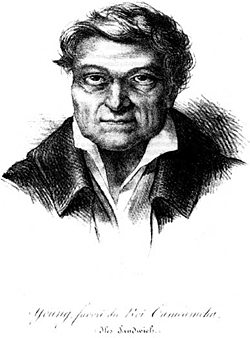
NPS Archives Historical Overview Long before the time of King Kamehameha I, a socio-political hierarchy, deeply rooted in spiritual beliefs developed in Hawai'i. This rigidly ordered class system gave power to a small number of ali'i nui (high chiefs) who controlled different parts of an island, a whole island, or several islands. Alliances through bloodlines and marriage further complicated and enhanced the relationships among rival chiefs. To maintain law and order, a kapu (taboo) system based on religious and practical beliefs was imposed by the sovereign ali'i on all of the population. The kapu system was extremely restrictive and rigid, with severe, penalties for those who broke a kapu. The kapu system was in effect for many centuries before it was officially overthrown in 1819, after the death of Kamehameha. Within this social and religious structure, the political rise of Kamehameha I and the construction of Pu'ukohola Heiau occurred around 1790. Heiau (temples) took on many forms from simple stone markers such as those used as fishing shrines, to massive stone platforms associated with human sacrificial temples. Large heiau such as Pu'ukohola could only be accessed by the priests and chiefly classes. One explanation for Kamehameha’s rise to power is based on the fulfillment of four prophecies that different kahuna (priests) decreed would change the course of history in Hawai'i. Each prophecy was directly related to Kamehameha either through his birth or his deeds. A different explanation for his rise to power is based on the political conflict on Hawai'i in the 1780s. It focuses on his uncles as the force pushing Kamehameha I to the forefront in order to protect their own interests. In the 1780s, the Hawaiian Islands were in civil unrest as warring chiefs fought for control. The island of Hawai'i had its own internal struggle when one of the ali'i nui Kalani'opu'u, died. He passed his title to his son Kiwala'o and named his nephew, Kamehameha, keeper of the family war god, Kuka'ilimoku. Kiwala'o, the new ali‘i then bestowed gift lands to his uncle Keawemauhili, but left his own half-brother, Keoua Ku'ahu‘ula, with nothing. Meanwhile, Kamehameha felt he should have of a greater political role. Kiwala'o was killed in battle, setting off a power struggle between Keoua, Keawemauhili, and Kamehameha. Kapoukahi, a powerful kahuna from Kauaii, prophesized that war would end if Kamehameha constructed a heiau dedicated to the war god Ku at Pu'ukohola. In 1791, Keoua, Kamehameha’s cousin, was slain at Pu'ukohola, an event that according to prophesy, led to the conquest and consolidation of the islands under the rule of Kamehameha I. The end of the 1700s was marked by increased visits to the Hawaiian Islands by European explorers. With their trade ships, warships, cannon, and military experience, the foreigners were considered assets by the warring chiefs. 
Kamehameha was particularly astute on this point and took captive two young seamen, John Young and Isaac Davis. Young and Davis proved their courage and loyalty in battle and became close, trusted lieutenants to Kamehameha, aiding in his rise to power. Their relationship lasted far beyond the battlefield and into civilian life, with Young eventually becoming governor on the Island of Hawai'i, and Davis on the island of O'ahu. John Young, the stranded British sailor who became advisor to King Kamehameha, also handled the king’s business affairs with foreign traders. As a trusted advisor held in high esteem, the king granted him land at Kawaihae, adjoining Pu'ukohola, for a home. Young first built a small home near the beach below the heiau. Later, he built a larger compound just north of the heiau. His plaster-covered stone house was the first Western style structure in Hawai'i. John Young’s homestead is a part of Pu'ukohola Heiau National Historic Site and is being protected and preserved for future generations. The multifaceted overthrow of the kapu system in 1819 ended the formal worship of gods and ritual use of the large heiau. They were abandoned and many were destroyed or dismantled, with only their stone platforms remaining. Their surrounding lands were used for agriculture, ranching, or settlement. Pu'ukohola Heiau was designated in 1928 when it was commemorated as a Historical Landmark by the Hawaiian Territorial Government. In the 1960s, the Queen Emma Foundation and the Queen’s Medical Center, the Waimea and other Hawaiian Civic Clubs, and the local community groups were instrumental in getting Pu'ukohola Heiau designated as a National Historic Landmark. The Queen Emma Foundation donated 34 acres of land in 1972 encompassing Pulukohola Heiau and the John Young Homestead made it possible for the establishment of Pu'ukohola Heiau National Historic Site. Through an act of Congress on August 17, 1972, this site became one of the chosen few to be recognized as one of our nation’s crown jewels and national treasures, to be preserved and protected for future generations. |
Last updated: July 1, 2025
